Grow Zucchini at Home and unlock a world of culinary possibilities right in your backyard! Have you ever dreamt of strolling through your garden, basket in hand, and harvesting plump, vibrant zucchini ready to be transformed into delicious meals? Well, dream no more! This DIY guide is your key to making that dream a reality, even if you’re a complete beginner.
Zucchini, a member of the squash family, has a rich history, with its origins tracing back to Central America. While its wild relatives have been around for millennia, the zucchini we know and love today was actually developed in Italy in the 19th century. From there, it spread across the globe, becoming a staple in countless cuisines.
But why should you bother learning to grow zucchini at home? Simple! Store-bought zucchini can sometimes lack the freshness and flavor of homegrown varieties. Plus, gardening is incredibly therapeutic! Imagine the satisfaction of nurturing a tiny seed into a bountiful plant, knowing exactly where your food comes from and avoiding harmful pesticides. In this article, I’ll share my favorite DIY tricks and hacks to help you cultivate a thriving zucchini patch, regardless of your space or experience level. Get ready to enjoy an abundance of fresh, flavorful zucchini all season long!
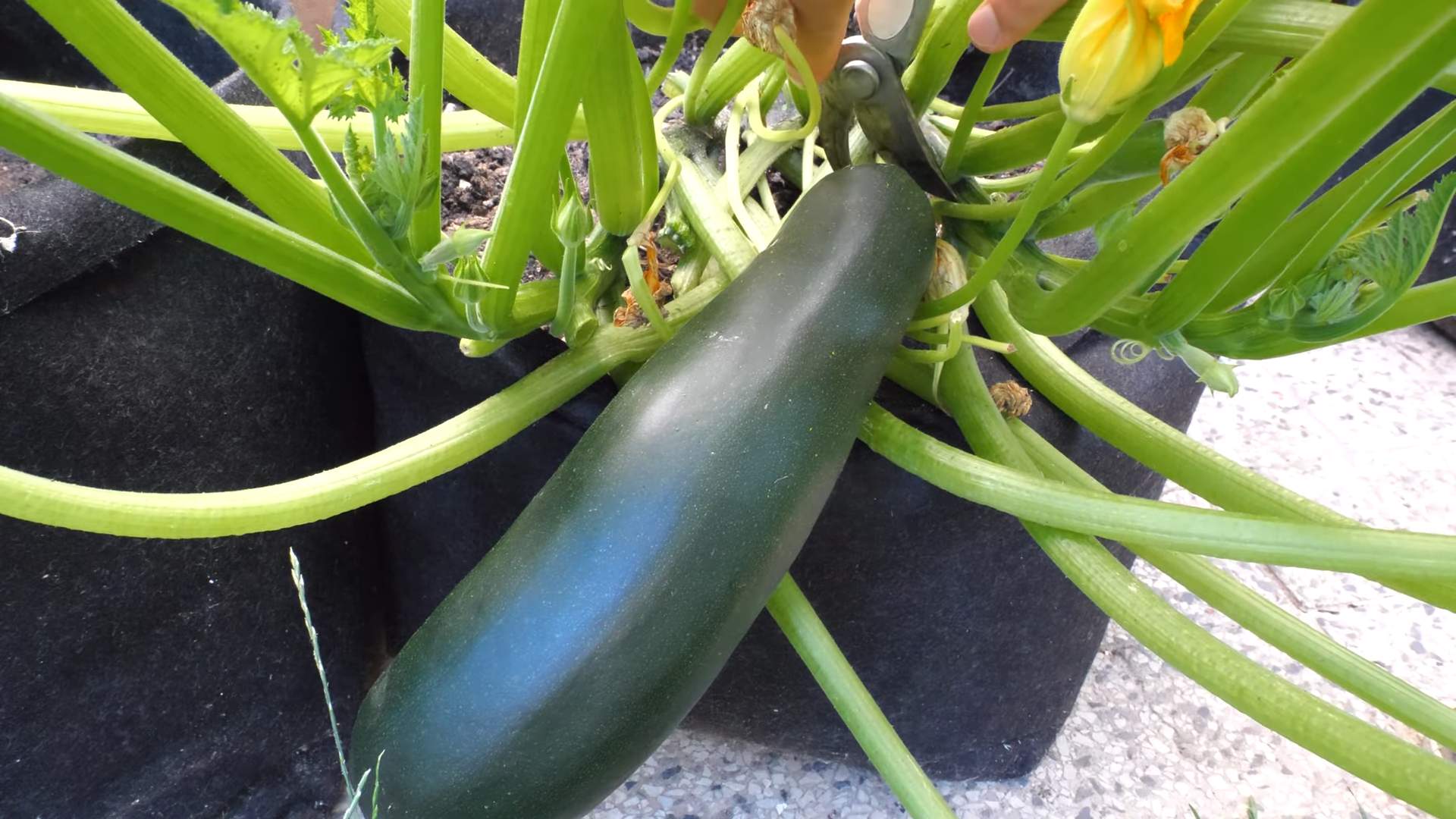
Growing Zucchini: From Seed to Table – A Beginner’s Guide
Hey there, fellow gardening enthusiasts! I’m so excited to share my experiences and tips for growing zucchini at home. Zucchini is a fantastic vegetable to grow – it’s prolific, relatively easy, and incredibly versatile in the kitchen. Get ready for an abundance of delicious zucchini bread, grilled zucchini, and so much more!
Choosing Your Zucchini Variety
Before we dive into the nitty-gritty, let’s talk about zucchini varieties. There are tons to choose from, each with its own unique characteristics. Here are a few popular options:
* Black Beauty: A classic, dark green zucchini that’s known for its excellent flavor and productivity. This is a great all-around choice for beginners.
* Golden Zucchini: A vibrant yellow zucchini that adds a pop of color to your garden and your plate. It has a slightly sweeter flavor than the green varieties.
* Costata Romanesco: An Italian heirloom zucchini with distinctive ridges and a nutty flavor. It’s a bit more challenging to find, but well worth the effort.
* Round Zucchini (Eight Ball, One Ball): These adorable, spherical zucchinis are perfect for stuffing. They’re also great for adding visual interest to your garden.
I personally love growing Black Beauty because it’s reliable and produces a ton of zucchini. But feel free to experiment and find your favorite!
Getting Started: Planting Your Zucchini
Zucchini loves warm weather, so it’s best to plant it after the last frost. You can either start seeds indoors or direct sow them in your garden. I usually prefer direct sowing because it’s less work and the plants tend to be stronger.
Direct Sowing Zucchini Seeds
1. Prepare the Soil: Zucchini needs well-drained, fertile soil. Amend your garden bed with compost or well-rotted manure to improve drainage and add nutrients. I like to dig in about 2-3 inches of compost.
2. Choose a Sunny Spot: Zucchini plants need at least 6-8 hours of sunlight per day. Pick a spot in your garden that gets plenty of sunshine.
3. Sow the Seeds: Plant the seeds about 1 inch deep and 2-3 feet apart. Zucchini plants get quite large, so give them plenty of room to spread out. I usually plant 2-3 seeds per hill and then thin them out to the strongest seedling.
4. Water Thoroughly: After planting, water the seeds gently but thoroughly. Keep the soil consistently moist until the seedlings emerge.
5. Be Patient: Zucchini seeds usually germinate in 7-10 days, depending on the soil temperature.
Starting Zucchini Seeds Indoors (Optional)
If you live in a colder climate or want to get a head start on the growing season, you can start zucchini seeds indoors.
1. Use Seed Starting Trays or Pots: Fill them with a good quality seed starting mix.
2. Sow the Seeds: Plant the seeds about 1 inch deep in the seed starting mix.
3. Water Gently: Keep the seed starting mix moist but not soggy.
4. Provide Light: Place the trays or pots under grow lights or in a sunny window.
5. Harden Off the Seedlings: Before transplanting the seedlings into your garden, you’ll need to harden them off. This means gradually exposing them to outdoor conditions over a period of 7-10 days. Start by placing them outside for a few hours each day, gradually increasing the amount of time they spend outdoors.
6. Transplant Carefully: Once the seedlings are hardened off, transplant them into your garden, spacing them 2-3 feet apart.
Caring for Your Zucchini Plants
Once your zucchini plants are established, they’re relatively easy to care for. Here are a few tips to keep them happy and healthy:
* Water Regularly: Zucchini plants need consistent moisture, especially during hot, dry weather. Water deeply at the base of the plant, avoiding getting the leaves wet. I usually water my zucchini plants every other day, or more often if the soil is dry.
* Fertilize: Feed your zucchini plants with a balanced fertilizer every 2-3 weeks. You can use a liquid fertilizer or a slow-release granular fertilizer. I like to use a fertilizer that’s high in phosphorus, which promotes flowering and fruiting.
* Mulch: Apply a layer of mulch around your zucchini plants to help retain moisture, suppress weeds, and regulate soil temperature. Straw, wood chips, or shredded leaves are all good options.
* Watch Out for Pests and Diseases: Zucchini plants can be susceptible to a few pests and diseases, such as squash bugs, squash vine borers, and powdery mildew. Inspect your plants regularly and take action if you see any signs of trouble.
* Squash Bugs: These pests can suck the sap from your zucchini plants, causing them to wilt and die. Handpick them off the plants or use an insecticidal soap.
* Squash Vine Borers: These pests bore into the stems of zucchini plants, causing them to collapse. Wrap the base of the stems with aluminum foil to prevent the borers from entering.
* Powdery Mildew: This fungal disease can cause a white, powdery coating on the leaves of zucchini plants. Improve air circulation around the plants and apply a fungicide if necessary.
* Pollination: Zucchini plants have separate male and female flowers. The female flowers need to be pollinated in order to produce fruit. Bees and other pollinators usually take care of this, but if you’re not seeing any fruit, you may need to hand-pollinate the flowers.
* Hand-Pollination: To hand-pollinate zucchini flowers, use a small paintbrush to transfer pollen from the male flower to the female flower. The male flower has a long, thin stem, while the female flower has a small zucchini fruit at the base.
Harvesting Your Zucchini
The best part about growing zucchini is, of course, harvesting it! Zucchini grows quickly, so you’ll need to check your plants regularly.
* Harvest When Small: Harvest zucchini when it’s young and tender, usually when it’s about 6-8 inches long. Larger zucchini can be tough and seedy.
* Use a Knife or Pruning Shears: Cut the zucchini from the plant with a sharp knife or pruning shears.
* Harvest Regularly: The more you harvest, the more zucchini your plants will produce.
I find that I’m harvesting zucchini almost every day during the peak of the season!
Dealing with Zucchini Overload
One of the biggest challenges of growing zucchini is dealing with the abundance of it! Here are a few ideas for using up all that zucchini:
* Zucchini Bread: A classic way to use up zucchini. There are tons of recipes online, so find one that you like and get baking!
* Grilled Zucchini: Slice zucchini lengthwise, brush it with olive oil, and grill it until it’s tender and slightly charred.
* Zucchini Noodles (Zoodles): Use a spiralizer to turn zucchini into noodles. Toss them with your favorite sauce or use them in place of pasta.
* Stuffed Zucchini: Hollow out zucchini and fill it with a mixture of ground meat, rice, and vegetables. Bake until tender.
* Zucchini Fritters: Grate zucchini and mix it with flour, eggs, and seasonings. Fry in oil until golden brown.
* Freeze It: Grate or slice zucchini and freeze it for later use. You can use frozen zucchini in soups, stews, and baked goods.
* Share with Friends and Neighbors: If you still have too much zucchini, share it with your friends, neighbors, or local food bank.
Troubleshooting Common Zucchini Problems
Even with the best care, you might encounter some problems while growing zucchini. Here are a few common issues and how to address them:
* Blossom End Rot: This condition causes the blossom end of the zucchini to rot. It’s usually caused by a calcium deficiency or inconsistent watering. Make sure your soil is well-drained and water your plants regularly. You can also add calcium to the soil by adding crushed eggshells or bone meal.
* Lack of Fruit: If your zucchini plants are producing flowers but not fruit, it could be due to a lack of pollination. Try hand-pollinating the flowers or attracting more pollinators to your garden by planting flowers that attract bees and butterflies.
* Yellowing Leaves: Yellowing leaves can be a sign of nutrient deficiency, overwatering, or pest infestation. Check the soil moisture and nutrient levels and inspect the plants for pests.
* Wilting Leaves: Wilting leaves can be caused by underwatering, squash vine borers, or disease. Water your plants regularly and check for signs of squash vine borers.
Enjoying Your Homegrown Zucchini
Growing zucchini
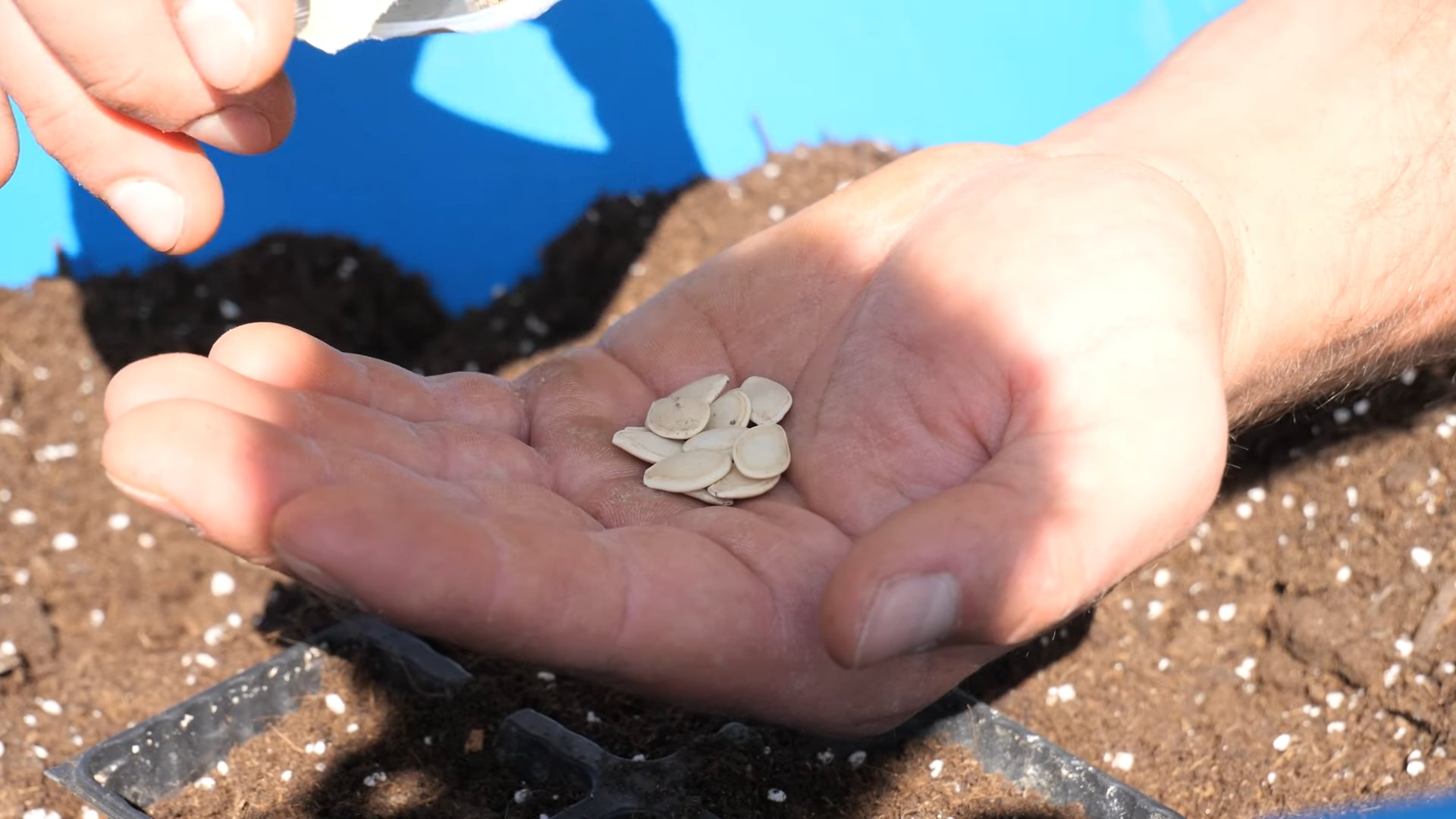
Conclusion
So, there you have it! Growing zucchini at home isn’t just a gardening project; it’s an investment in fresh, flavorful meals and a rewarding connection with nature. We’ve explored a straightforward, effective method that empowers you to cultivate these prolific vegetables right in your own backyard, balcony, or even on a sunny windowsill.
Why is this DIY approach a must-try? Because it puts you in control. You dictate the quality of the soil, the amount of sunlight, and the absence of harmful chemicals. You’re not just buying zucchini; you’re nurturing it from seed to table, ensuring the freshest, most nutritious produce possible. Imagine the satisfaction of serving a zucchini dish knowing you grew the star ingredient yourself!
Beyond the basic method, there’s plenty of room for experimentation. Consider these variations to personalize your zucchini-growing experience:
* Vertical Gardening: If space is limited, explore vertical gardening techniques. Zucchini can be trained to climb trellises or fences, maximizing your yield in a small area.
* Companion Planting: Enhance your zucchini’s growth by planting beneficial companions like marigolds (to deter pests) or nasturtiums (to attract pollinators).
* Heirloom Varieties: Venture beyond the standard green zucchini and try growing unique heirloom varieties like ‘Golden Zucchini’ or ‘Costata Romanesco’ for a burst of color and flavor.
* Container Gardening: For those with limited space, container gardening is a great option. Ensure you use a large pot (at least 24 inches in diameter) with good drainage and a high-quality potting mix.
Growing your own zucchini also allows you to harvest them at their peak ripeness. Store-bought zucchini are often picked before they’re fully mature to extend their shelf life, sacrificing some of their flavor and tenderness. When you grow your own, you can pick them when they’re small and tender, perfect for grilling, sautéing, or adding to salads.
But the benefits extend beyond the kitchen. Gardening is a therapeutic activity that reduces stress, promotes physical activity, and connects you with the natural world. Watching your zucchini plants grow and thrive is a deeply satisfying experience.
We wholeheartedly encourage you to give this DIY zucchini-growing trick a try. It’s easier than you might think, and the rewards are well worth the effort. Don’t be afraid to experiment, adapt the techniques to your specific environment, and most importantly, have fun!
Once you’ve harvested your first crop of homegrown zucchini, we’d love to hear about your experience. Share your tips, successes, and even your challenges in the comments below. Let’s build a community of zucchini growers and learn from each other. Did you try a unique variety? Did you discover a particularly effective pest control method? Your insights could help other gardeners achieve their zucchini-growing goals. Let us know how your journey to grow zucchini at home went!
Frequently Asked Questions (FAQ)
Q: How much sunlight do zucchini plants need?
A: Zucchini plants are sun-loving vegetables and require at least 6-8 hours of direct sunlight per day to thrive. Insufficient sunlight can lead to stunted growth, reduced fruit production, and increased susceptibility to diseases. Choose a planting location that receives ample sunlight throughout the day. If you’re growing zucchini in containers, you may need to move them around to ensure they get enough sun.
Q: What kind of soil is best for growing zucchini?
A: Zucchini plants prefer well-drained, fertile soil that is rich in organic matter. The ideal soil pH is between 6.0 and 7.5. Before planting, amend your soil with compost, aged manure, or other organic materials to improve its fertility and drainage. If you’re growing zucchini in containers, use a high-quality potting mix that is specifically formulated for vegetables. Avoid using garden soil in containers, as it can become compacted and poorly drained.
Q: How often should I water my zucchini plants?
A: Zucchini plants need consistent moisture, especially during hot, dry weather. Water deeply and regularly, aiming to keep the soil consistently moist but not waterlogged. Water at the base of the plants to avoid wetting the foliage, which can increase the risk of fungal diseases. A good rule of thumb is to water when the top inch of soil feels dry to the touch. Mulching around the plants can help retain moisture and suppress weeds.
Q: When is the best time to plant zucchini?
A: Zucchini is a warm-season vegetable and should be planted after the last frost when the soil has warmed up to at least 60°F (15°C). In most regions, this is typically in late spring or early summer. You can start zucchini seeds indoors 3-4 weeks before the last frost to get a head start, but be sure to harden off the seedlings before transplanting them outdoors.
Q: How do I deal with common zucchini pests and diseases?
A: Zucchini plants can be susceptible to various pests and diseases, including squash bugs, squash vine borers, powdery mildew, and blossom end rot. Regularly inspect your plants for signs of pests or diseases and take action promptly. Common pest control methods include hand-picking pests, using insecticidal soap, or applying neem oil. To prevent diseases, ensure good air circulation around the plants, avoid overhead watering, and remove any infected leaves or fruit. Blossom end rot is often caused by calcium deficiency, so amend your soil with calcium-rich amendments like bone meal or crushed eggshells.
Q: How do I harvest zucchini?
A: Zucchini is best harvested when it is young and tender, typically when it is 6-8 inches long. Use a sharp knife or pruning shears to cut the zucchini from the plant, leaving a short stem attached. Regular harvesting encourages the plant to produce more fruit. Overripe zucchini can become tough and seedy, so it’s important to harvest them frequently.
Q: Why are my zucchini flowers falling off without producing fruit?
A: This is a common problem called blossom drop, and it can be caused by several factors, including insufficient pollination, temperature stress, and nutrient deficiencies. Zucchini plants have separate male and female flowers, and pollination is required for fruit to develop. If there are not enough pollinators in your area, you may need to hand-pollinate the flowers. Use a small paintbrush to transfer pollen from the male flower to the female flower. Temperature stress can also cause blossom drop, so try to protect your plants from extreme heat or cold. Ensure your plants are getting adequate nutrients, especially phosphorus and potassium.
Q: Can I eat zucchini flowers?
A: Yes, zucchini flowers are edible and can be a delicious addition to your meals. They can be stuffed, fried, or added to salads. Harvest the male flowers in the morning, before they open fully. Gently wash the flowers and remove the pistil (female part) or stamen (male part) before cooking.
Q: How do I store zucchini?
A: Zucchini can be stored in the refrigerator for up to a week. Wrap the zucchini in a paper towel and place it in a plastic bag. Avoid storing zucchini near ethylene-producing fruits like apples and bananas, as this can cause it to ripen too quickly. You can also freeze zucchini for longer storage. Shred or slice the zucchini and blanch it in boiling water for 2-3 minutes before freezing.

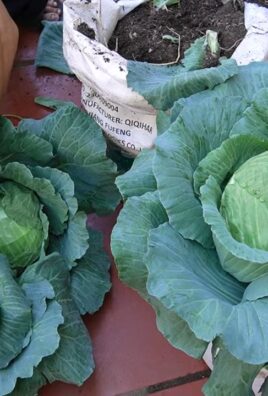
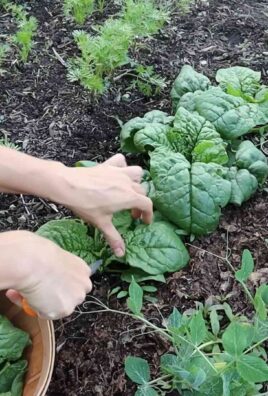
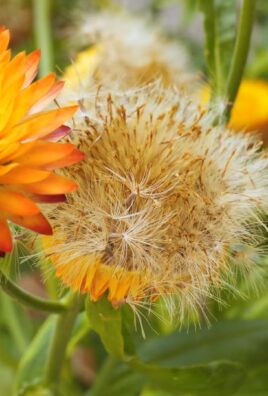
Leave a Comment